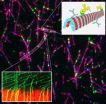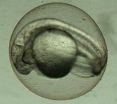(Press-News.org) LOS ANGELES — Nov. 7, 2012 – Cedars-Sinai Heart Institute researchers have found that an experimental compound may help stem the debilitating effects of muscular dystrophy by restoring normal blood flow to muscles affected by the genetic disorder.
The researchers studied HCT 1026, a new type of molecule in which nitric oxide is chemically attached to a standard anti-inflammatory agent, in a preclinical model of muscular dystrophy. Results suggest HCT 1026 may be beneficial for the treatment of Duchenne muscular dystrophy, which begins in early childhood, and Becker muscular dystrophy, which often occurs later in adulthood.
Preliminary results were presented in April 2012 at the experimental Biology meeting and now the full study is published in the Public Library of Science (PLOS ONE) and is available online.
Both forms of muscular dystrophy are caused by problems with a protein called dystrophin, which helps maintain healthy muscles. If patients have less dystrophin protein or if their body manufactures dystrophin protein that does not function correctly, their muscles cannot work properly and eventually become permanently damaged. As diseased muscles weaken over time, patients gradually can lose their ability to walk, sit or use their muscles in other ways. There is no cure now for either form of the disease.
"There is an urgent unmet need for effective therapeutic options for this devastating disease," said Ronald G. Victor, MD, director of the Cedars-Sinai Center for Hypertension in the Cedars-Sinai Heart Institute and the Burns and Allen Chair in Cardiology Research. "If we can improve blood flow in muscular dystrophy patients, we may be able to preserve some muscle function over a longer period of time."
HCT 1026 dramatically improved blood flow in muscles used during exercise by dystrophin-deficient laboratory mice who share the same genetic defect as humans, Cedars-Sinai researchers found. The compound may have accomplished this by delivering nitric oxide, a key molecule involved in many physiological functions and found at reduced levels in dystrophic muscles.
The compound fully restored blood flow to affected muscles within the first month of treatment, and the impact was completely sustained for three months without any noticeable adverse side effects.
Authors of the study said the results represent a step in the quest to find an effective treatment for muscular dystrophy that will reduce muscle wasting as well as slow the progression of the disease.
"Based on our previous work, we think the ability of HCT 1026 to release nitric oxide is the key to restoring muscle blood flow in dystrophin-deficient mice," said Gail Thomas, PhD, a lead author of the Cedars-Sinai study. "HCT 1026 is an interesting prototype which allowed us to investigate the potential of this family of molecules in muscular dystrophies. While we do not expect these nitric oxide-donating compounds to cure the disease, our hope is that the improved blood flow could reduce muscle fatigue and injury, allowing patients to be more active while slowing down the loss of vital muscle."
###The study was performed in collaboration with scientists at Nicox in Bresso (Italy) and Sophia Antipolis (France).
The work was supported by grants from the National Center for Advancing Translational Sciences in the National Institutes of Health (Grant #UL1TR000124), the Center for Duchenne Muscular Dystrophy, UCLA Muscular Dystrophy Core Center (Grant # P30AR05723) and Nicox Research Institute.
Cedars-Sinai research: Preclinical muscular dystrophy data shows promise
2012-11-08
ELSE PRESS RELEASES FROM THIS DATE:
Capturing carbon with clever trapdoors
2012-11-08
University of Melbourne Engineers have developed a novel method of collecting and storing carbon dioxide that will reduce the cost of separating and storing carbon dioxide.
The quest to capture carbon dioxide is crucial to a cleaner future and once captured, carbon dioxide can be compressed and safely stored.
It is also a useful source for chemical manufacture. However, current processes are inefficient and require several stages of refining and extraction before a pure form of carbon dioxide is produced.
One method of capturing carbon dioxide is through molecular ...
Historic coral collapse on Great Barrier Reef
2012-11-08
Australian marine scientists have unearthed evidence of an historic coral collapse in Queensland's Palm Islands following development on the nearby mainland.
Cores taken through the coral reef at Pelorus Island confirm a healthy community of branching Acropora corals flourished for centuries before European settlement of the area, despite frequent floods and cyclone events. Then, between 1920 and 1955, the branching Acropora failed to recover.
Scientists from the ARC Centre of Excellence for Coral Reef Studies at the University of Queensland say the rapid collapse of ...
The right pace of neural development protects against autism and intellectual disability
2012-11-08
Neurodevelopmental disorders such as intellectual disability and autism spectrum disorders are marked by mutations that impair signaling between neurons. These mutations cause key brain circuits involved in learning and memory to develop too quickly, leading to long-lasting behavioral and cognitive deficits, according to a study published by Cell Press in the November 9th issue of the journal Cell. The findings could pave the way to new treatment strategies for severe forms of neurodevelopmental disorders.
"We have provided perhaps the first evidence that acceleration ...
Fairy-wren babies need password for food
2012-11-08
AUDIO:
This is a fairy-wren incubation call.
Click here for more information.
It's always a good idea to listen to your mother, but that goes double for baby fairy-wrens even before they are hatched.
If those fairy-wren babies want to be fed, they need to have a password—a single unique note—taught to them by their mothers from outside the egg. The nestlings incorporate that password right into their begging calls, according to researchers who report their discovery online ...
Scientists uncover secrets of how intellect and behavior emerge during childhood
2012-11-08
JUPITER, FL – Scientists from the Florida campus of The Scripps Research Institute (TSRI) have shown that a single protein plays an oversized role in intellectual and behavioral development. The scientists found that mutations in a single gene, which is known to cause intellectual disability and increase the risk of developing autism spectrum disorder, severely disrupts the organization of developing brain circuits during early childhood. This study helps explain how genetic mutations can cause profound cognitive and behavioral problems.
The study was published in the ...
Meet Xenoceratops: Canada's newest horned dinosaur
2012-11-08
Ottawa, Canada (November 8, 2012) – Scientists have named a new species of horned dinosaur (ceratopsian) from Alberta, Canada. Xenoceratops foremostensis (Zee-NO-Sare-ah-tops) was identified from fossils originally collected in 1958. Approximately 20 feet long and weighing more than 2 tons, the newly identified plant-eating dinosaur represents the oldest known large-bodied horned dinosaur from Canada. Research describing the new species is published in the October 2012 issue of the Canadian Journal of Earth Sciences.
"Starting 80 million years ago, the large-bodied ...
UMass Amherst cell biologists identify new protein key to asymmetric cell division
2012-11-08
AMHERST, Mass. – Recently biologists at the University of Massachusetts Amherst led by Wei-lih Lee have identified a new molecular player in asymmetric cell division, a regulatory protein named She1 whose role in chromosome- and spindle positioning wasn't known before. Asymmetric cell division is important in the self-renewal of stem cells and because it ensures that daughter cells have different fates and functions.
When a fertilized egg develops in a fruit fly or a human being, the number of asymmetric cell divisions must be precisely balanced by symmetric cell divisions, ...
Scientists reveal key protein interactions involved in neurodegenerative disease
2012-11-08
JUPITER, FL, November 8, 2012 – Scientists from the Florida campus of The Scripps Research Institute (TSRI) have defined the molecular structure of an enzyme as it interacts with several proteins involved in outcomes that can influence neurodegenerative disease and insulin resistance. The enzymes in question, which play a critical role in nerve cell (neuron) survival, are among the most prized targets for drugs to treat brain disorders such as Parkinson's disease, Alzheimer's disease and amyotrophic lateral sclerosis (ALS).
The study was published online ahead of print ...
Unique spinal nerve cell activity discovery announced by University of Leicester biologists
2012-11-08
Scientists from the University of Leicester have hit upon unique forms of spinal nerve activity that shape output of nerve cell networks controlling motor behaviours.
The breakthrough in the Department of Biology at the University of Leicester is announced today (5pm GMT on Thursday Nov 8) in the journal Current Biology. The three- year study was funded by the Biotechnology and Biological Sciences Research Council (BBSRC).
Although the neural basis of motor control has been studied for over a century, the processes controlling maturation of locomotor behaviours – like ...
Rethinking body mass index for assessing cancer risk
2012-11-08
November 8, 2012 — (Bronx, NY) — A study by researchers at Albert Einstein College of Medicine of Yeshiva University suggests that body mass index (BMI)—the most commonly used weight-for-height formula for estimating fatness—may not be the best measure for estimating disease risk, and particularly the risk of certain types of cancer. The study was published today in the online edition of the American Journal of Epidemiology.
BMI is calculated by dividing a person's weight (in kilograms) by his or her height in meters squared, or W/H2. Most of the early studies that ...




